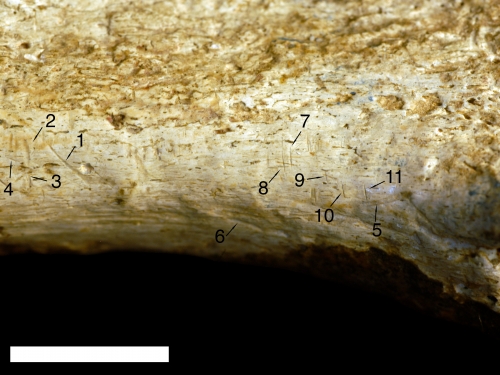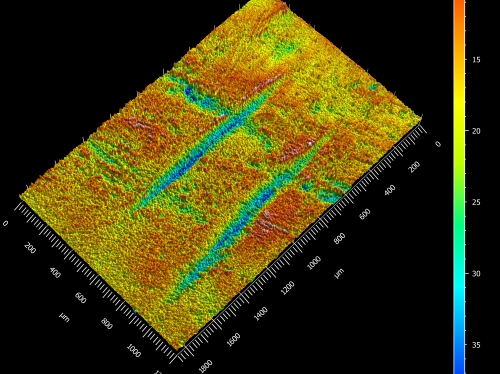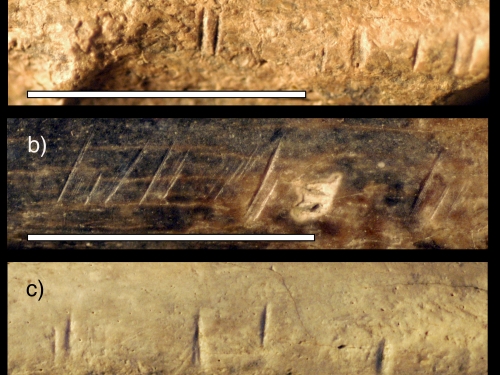View of the hominin tibia and magnified area that shows cut marks. Scale = 4 cm. Photo by Jennifer Clark
In a new study published today, June 26, in Scientific Reports, Smithsonian’s National Museum of Natural History paleoanthropologist Briana Pobiner and her co-authors describe nine cut marks on a 1.45 million-year-old left shin bone from a relative of Homo sapiens found in northern Kenya. Analysis of 3D models of the fossil’s surface revealed that the cut marks were dead ringers for the damage inflicted by stone tools. This is the oldest instance of this behavior known with a high degree of confidence and specificity.
Pobiner first encountered the fossilized tibia, or shin bone, in the collections of the National Museums of Kenya’s Nairobi National Museum while looking for clues about which prehistoric predators might have been hunting and eating humans’ ancient relatives. With a handheld magnifying lens, Pobiner pored over the tibia looking for bite marks from extinct beasts when she instead noticed what immediately looked to her like evidence of butchery.
“You can make some pretty amazing discoveries by going back into museum collections and taking a second look at fossils,” Pobiner said. “Not everyone sees everything the first time around. It takes a community of scientists coming in with different questions and techniques to keep expanding our knowledge of the world.”




